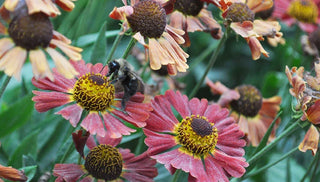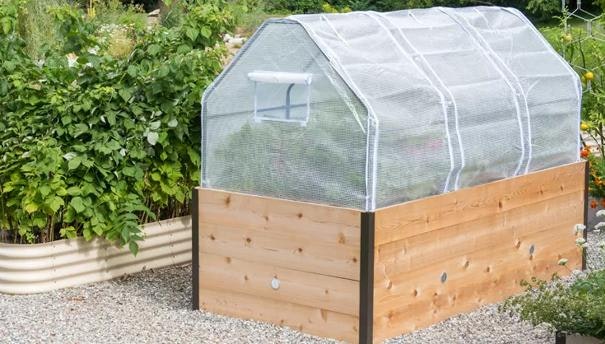Fall Gardening "DOs"
 Fall is the time to gather and save seeds for replanting.
Fall is the time to gather and save seeds for replanting. Heliopsis continues to bloom into fall, brightening the garden and feeding pollinators and birds.
Heliopsis continues to bloom into fall, brightening the garden and feeding pollinators and birds.DO encourage late blooms
Plants that bloom in late summer and autumn, such as asters, turtlehead, Joe Pye weed, and helenium, are an important source of food for pollinators to fuel their winter migration.
DO apply compost
Spread a 1" to 2" layer of compost under perennials, trees, and shrubs as a slow-release supply of nutrients for roots, so they're ready for robust growth next spring.
DO continue to water trees and shrubs
The soil around woody plants should be kept moist until the ground freezes. This is especially important for evergreens, which continue to take up water throughout the winter. Once the ground freezes, apply a 2-3" layer of organic mulch (shredded leaves, pine straw, or bark chips) around the trees and shrubs, keeping the mulch a few inches from stems and trunks.
DO leave ornamental grasses
Ornamental grasses can be left as is, so you can enjoy their beauty all winter. Or, if you prefer, they can be cut back to 3-4" in fall.
 Ornamental grasses are lovely swaying in the breeze and catching dustings of snow — and the seed heads provide food for birds.
Ornamental grasses are lovely swaying in the breeze and catching dustings of snow — and the seed heads provide food for birds.DO light fall pruning
Trim dead or diseased branches from trees and shrubs. Wait until spring (depending on the type of plant) for major pruning — this also gives you a chance to see the plant live and blooming before you start cutting.
DO drain hoses
Admittedly not a fun task, but a necessary one for Northern gardeners. Make sure the water is drained from irrigation systems, hoses, and any other watering equipment that can be damaged when water freezes.
DO test your soil
Use a home test kit or, better yet, send a sample to a professional lab to check for nutrients and pH (acidity/ alkalinity). Apply lime or sulfur if needed to change pH based on test result recommendations.
DO save seeds for both you and the wildlife
Did you grow a truly spectacular variety of calendula this year? Collect seeds for replanting next year. Leave native perennials like coneflower, monarda, and milkweed for the birds to feast on.
 Goldfinches and other songbirds find sunflower seeds irresistible. Leave the drooping seed heads in place and watch the antics of birds as they feed.
Goldfinches and other songbirds find sunflower seeds irresistible. Leave the drooping seed heads in place and watch the antics of birds as they feed.
Fall Gardening "DON'Ts"
DON'T let soil freeze in planters
Moist soil expands as it freezes, which can cause cracks in ceramic, terra cotta, and some plastic containers. Unless a planter is guaranteed as weatherproof, it's best to empty it and store it under cover.
DON'T keep diseased material
Healthy garden plants, leaves, stems, and soil can be tossed in the compost. However if you've been hit by powdery mildew or late blight, you'll want to bag and toss (in the trash) infected plant material so it doesn't reemerge next season.
DON'T discard fallen leaves
They contain a wealth of nutrients! If you have a scattering of leaves on your lawn, mow over them to break them into small pieces that will decompose quickly. Otherwise, rake and add leaves to your compost pile, or shred leaves and use them as a mulch around perennials and shrubs.
DON'T apply fertilizer
Feeding late in the season can disrupt the plants' hardening-off process. Slow-release fertilizers and compost are the exception, because unlike quick-release synthetic fertilizers, they won't cause a flush of new growth.
DON'T tidy too much
Many beneficial insects and pollinators overwinter in fallen leaves, brush piles, and un-mowed areas. Allowing part of your yard to remain a little "wild" will provide important habitat.
DON'T mulch too early, or too deeply
Mulch insulates the soil, and in fall that isn't necessarily a good thing. Cool soil helps plants enter their winter resting state. Wait until the ground has frozen, then apply a 2-3" layer of mulch to prevent winter freeze-thaw cycles that can stress plants.




